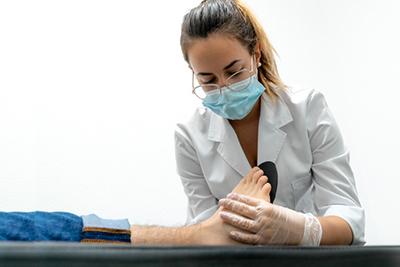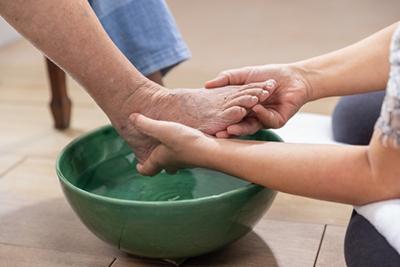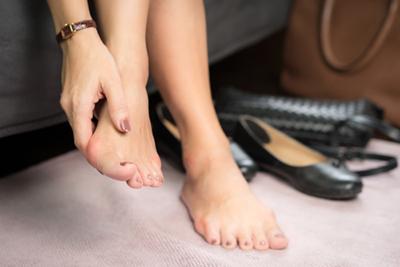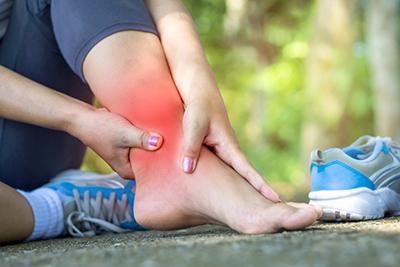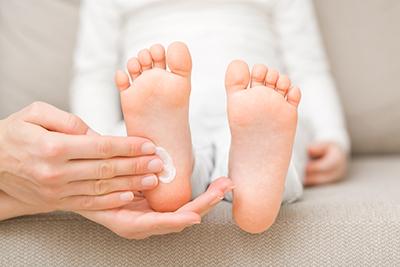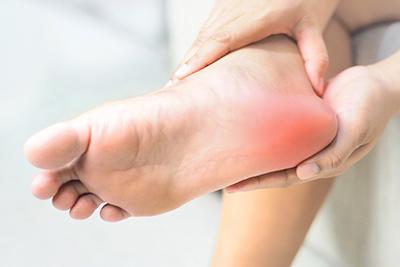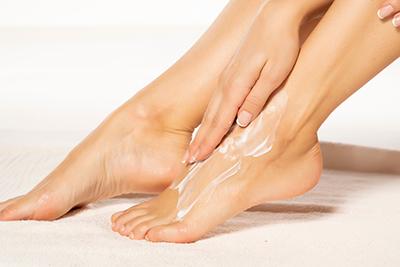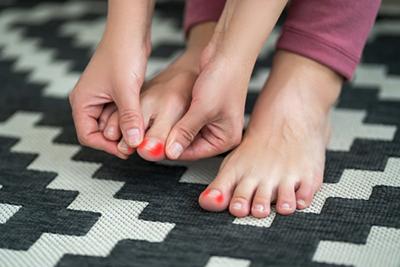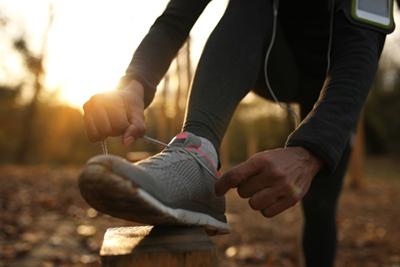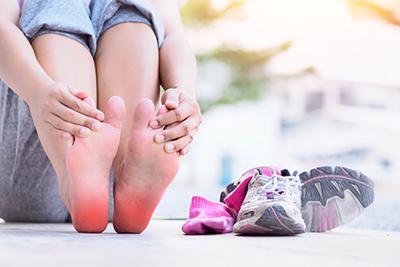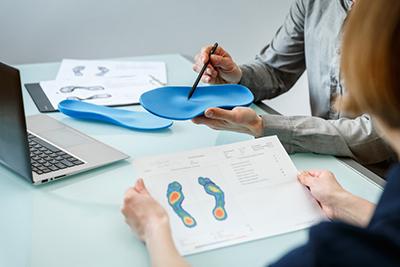Blog
When To See a Podiatrist
- posted: Oct. 06, 2023
A podiatrist is an expert at diagnosis and treatment of foot, ankle, and toe conditions. A podiatrist can help you enjoy healthy feet, so you can stay active. Visiting your Read More
The Importance of Diabetic Care
- posted: Oct. 01, 2023
When you’re dealing with diabetes, it’s important that you’re getting all the care that you need to ensure every part of your body. One big issue is making sure that Read More
Treating Your Bunion Symptoms
- posted: Sep. 15, 2023
Bunions are a common problem. In fact, over half of the women in the United States have developed a bunion at some point, according to the American Academy of Orthopedic Read More
Bunion Treatment Options
- posted: Sep. 01, 2023
If you have a bunion, you are not alone. A bunion is one of the most common, and painful foot problems your podiatrist can treat. What You Need To Know About Read More
When You Should See a Podiatrist for Ankle Pain
- posted: Aug. 10, 2023
Ankle pain can cause problems in your life. When you have ankle pain it can affect your ability to stand, put weight on your ankle, and walk around. Fortunately, your Read More
Foot Health for Children
- posted: Aug. 01, 2023
When you think about taking care of your child, you may not be thinking about taking care of your child’s feet. The truth is, foot health for children is important, Read More
Heel Pain: Causes and Treatments
- posted: Jul. 18, 2023
When you’re dealing with an issue like heel pain, this could be caused by a variety of issues. Each issue has different specific causes and symptoms and it’s important that Read More
What Does a Podiatrist Do?
- posted: Jul. 13, 2023
Podiatrists like Dr. Joseph Treadwell and Dr. Christian Davis at Foot & Ankle Specialists of Connecticut provide numerous benefits for individuals with foot and ankle issues. They're specialized medical professionals Read More
Diabetes and Foot Care: Tips for Maintaining Healthy Feet
- posted: Jul. 01, 2023
Diabetes is a serious disease, affecting many of the major systems of your body, including your immune, circulatory, and nervous systems. The effects of diabetes are especially evident in your Read More
Suffering From Ingrown Toenails?
- posted: Jun. 09, 2023
Ingrown toenails can happen to anyone, and they can happen to you. Ingrown toenails can be painful and debilitating, making it difficult to wear shoes, stand, and walk. Fortunately, your Read More
What You Need To Know About Taking Care of Your Feet
- posted: Jun. 01, 2023
Running and staying active are healthy choices for your body and mind. The health of your feet is very important if you want to stay active. Your podiatrist can help Read More
Treating Foot and Ankle Injuries
- posted: May 12, 2023
No matter your age, everyone is prone to dealing with a foot or ankle injury at some point in their lives. Whether you have a child who is active in Read More
Foot Conditions That Affect Athletes and How to Prevent Them
- posted: May 02, 2023
While being athletic can be a great way to stay in shape, you do run the risk of dealing with specific foot conditions that could affect your ability to participate Read More
What Causes a Bunion?
- posted: Apr. 14, 2023
If you suffer from bunions you know they are much more than just an aesthetic problem, they can worsen, become larger, and more painful over time. A bunion appears as Read More
The Benefits of Custom Orthotics for Foot Pain
- posted: Apr. 13, 2023
When you’re dealing with foot pain, it can affect other areas of your body. It can also be hard to do normal tasks like walking. You might find that you Read More
Our Locations
Danbury
6 Germantown Road, Germantown,
Danbury, CT 06810

